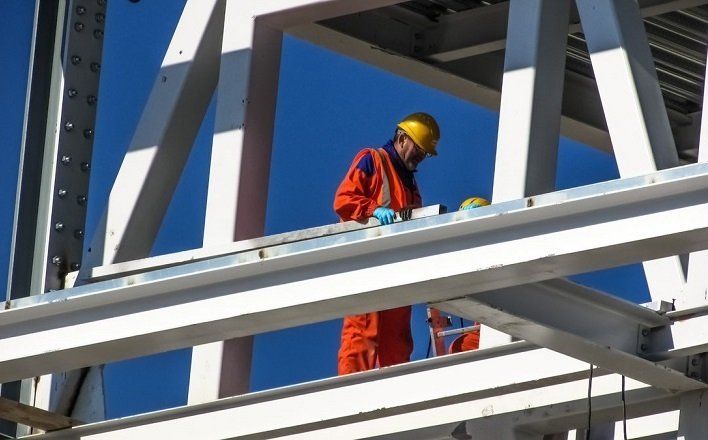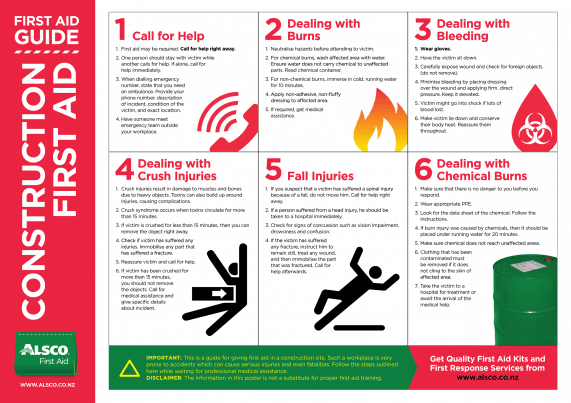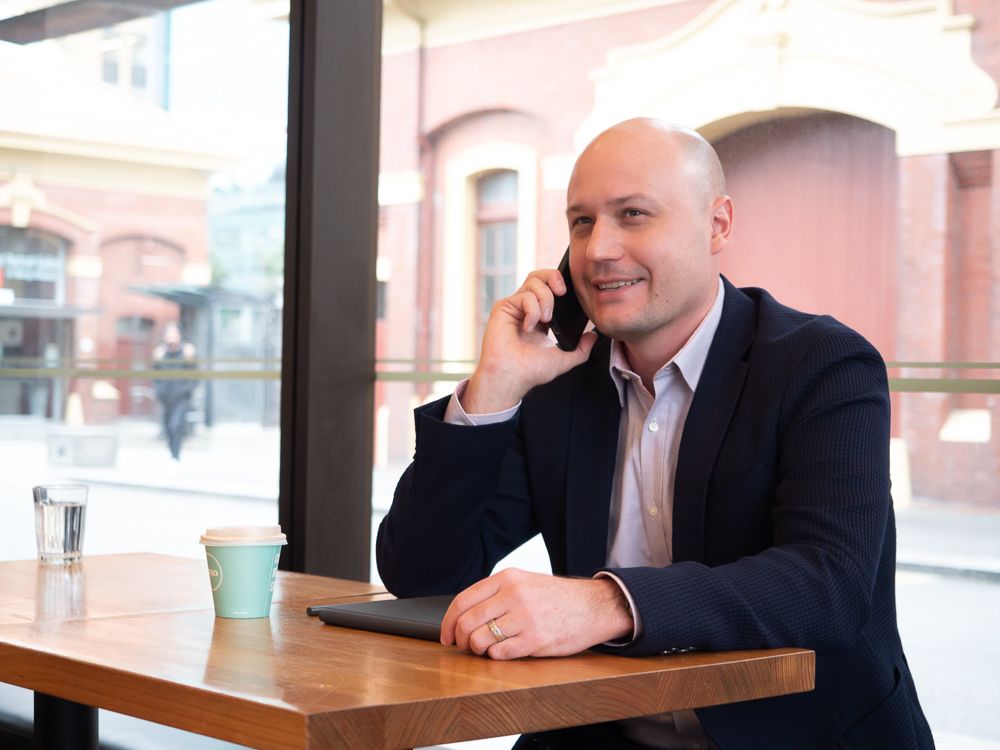The Lowdown on Construction Workplace Injuries

The Lowdown on Construction Workplace Injuries

Here's a few more tips from Alsco NZ:
- Evaluate the Situation
Most people’s first reaction to an emergency situation is to flock towards the victim. Instead of doing this, you should: neutralize all hazards around the place of emergency as quickly as possible, check the area for anything that may cause further harm, and check the victim’s consciousness and responsiveness.
As you look after the patient, get someone to make an emergency call. If you are alone with the victim, reach out for your phone and make the necessary call. Make sure to never leave his/her side while you wait for the ambulance.
When making an emergency call, make sure to keep these in mind:
- Your phone number
- A concise but relevant description of what happened
- The status of the patient
- Your exact location
It is best to have someone meet the incoming emergency team as the help arrives.
- Handle Burns Carefully
When it comes to burns, make sure that the danger is under control before attempting to approach the victim. The first aid for any degree of burn is to wash the affected area with clean running water.
Do take note that chemical burns are highly sensitive and can easily get contaminated. So remember to remove any clothing exposed to the chemical and flush the burnt area with cool running water, not cold as it may aggravate the injury.
Once you have flushed the burnt area with cool water, start applying a non-adhesive, non-fluffy, wet dressing to prevent infection without agitating the burnt area. Call for a medical assistance as soon as possible.
- Take Care of the Bleeding
In a construction workplace, cuts and bruises are common everyday possibilities. But no matter how common they are, it’s still important to take extra caution when handling bleeding patients - no matter how severe the wound is. Before handling a bleeding victim, make sure that you are wearing a pair of gloves.
Check the wound for any foreign material, do not remove any objects from the wound as this may cause further and probably even more severe bleeding. Severe bleeding can cause shock so make sure to call an ambulance immediately if this is the case. While waiting for the emergency medical team to arrive, you can try to minimise bleeding by placing a dressing on the wound while applying firm, direct pressure and keeping the affected area elevated.
- Dealing with Crush Injury
Crush injuries are the result of a falling heavy object that has put a lot of pressure onto a body part. These injuries also happen when a body part is violently squeezed between two objects. Crush injuries could result in broken bones, severe bruising, bleeding, lacerations, breakdown of muscles
When dealing with crush injuries, always neutralize any hazard before attending to the victim. Be sure to check for the victim’s responsiveness. Assess the situation and evaluate the wound’s severity. As long as it is logically safe, remove the crushing weight ASAP. For minor crush injuries, the medical attention needed are the same as treating cuts and bleeding.
- Dealing with Fall Injuries
It can already be considered critical if a victim falls from a height that is more than one metre, as the chances of incurring head or spinal injury are already high. The immediate course of action in situations like this is to stabilise the victim and treat any possible concussion.
Assess the victim thoroughly. Check for the following signs of concussion that need immediate medical attention: confusion, vision impairment, nausea and/or drowsiness.
Call an ambulance straight away. If the victim has sustained any fracture, treat any incurred wound and immobilise the fractured area.
The Lowdown
It’s important that every emergency situation in a construction workplace is properly documented. See to it that the what, where, and how are explained in as much detail as possible. It is also important that the treatment provided has been properly noted, as well as the ambulance number, and the hospital where the victim was taken to.
Accidents in a construction workplace cannot be completely avoided. But being alert and informed in how to deal with emergency situations can be of great help in saving a worker’s life. In fact, simply having first aid kits in easily accessible locations around your workplace can greatly contribute to saving lives in emergencies.
For more information and downloadable resources, visit www.alsco.co.nz





